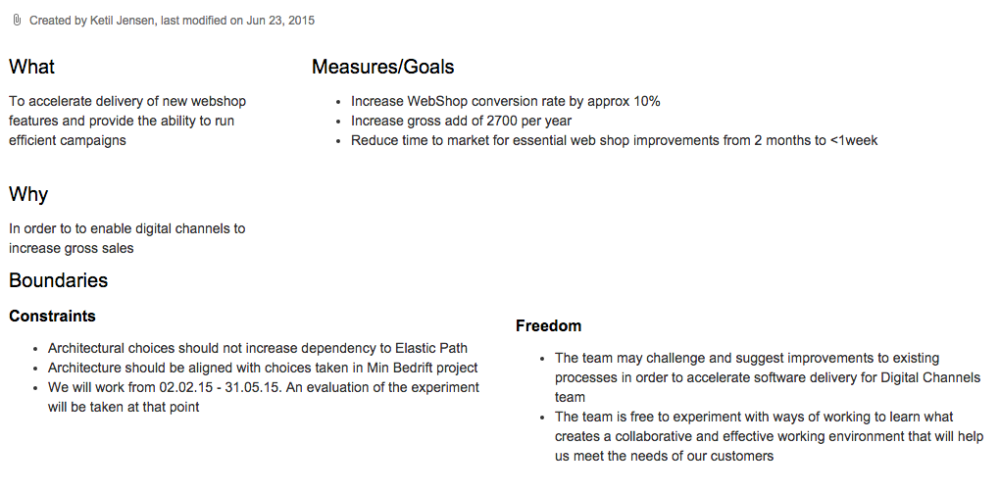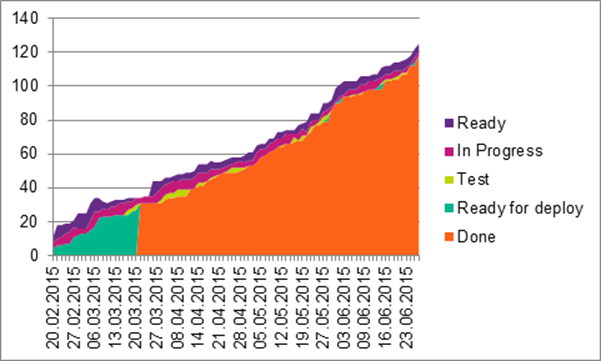(This is the second post on our journey toward building a Leaner IT-organization, “Towards a Leaner Enterprise – The Beginning” is the first)
For the last 4 months I’ve been leading an experiment at my current client, a big Telecom company in Norway. The experiment is related to finding better ways of working. In a previous post, “Towards a Leaner Enterprise – The Beginning“, I have described what trigged the need for a change: All the teams followed the same release process (one big common), releasing software simultaneously in big batches approximately every sixth week. The process had a touch of waterfall in it:
- some people were responsible for breaking business needs into user stories
- The stories were allocated to teams responsible for coding.
- The acceptance testing was then handed over to someone else
- And finally the software was deployed by Ops
Needless to say this created some problems for the organisation (long lead times, lot of errors in production systems etc.) We thought we could do better. The challenge is to make other people also see the same problems. We decided to propose an experiment to test out a new way of working
Defining a Hypothesis
The advantage with defining something as an experiment is that is more easily accepted by the organization, the word seems to make it less dangerous for people who would otherwise feel threatened by change. Thus, we avoided some organisational friction and reduced the risk of being “shot down”. We proposed the following hypothesis:
“If we get a skilled, crossfunctional autonomous team working together with Digital channels (business), then we think Digital channels can deliver new features to the web shop faster and with better quality. The result will be added gross sales.”
But it’s no point delivering faster if we deliver the wrong things. So we used a substantial amount of time defining a direction that was aligned with the company’s direction. To be able to verify or dispute our hypothesis, we defined some targets that we wanted to reach:
- Reduce lead time from an average of 2 months to < 1 week
- Increase conversion rate by 10 % – leading to a gross add of 16,7 Mill NOK per year
- Increase gross add of 2700 customers per year
The length of the experiment was 4 months (February 1st – 31st of May) and the team were given some boundaries to operate within. The following picture shows how we defined what, why, measures and boundaries for the team (inspired by Stephen Bungay’s Art of Action)

How did we do
The cumulative flow diagram shows how we did in terms of delivering features to the users.

We reduced lead time from a best case of 2 months to an avaerage of around 7 days. Our historical data shows that 95 % of our stories can be delivered between 7.3 and 9.4 days. The conversion rate is up by almost 30 % as we speak. Top management has seen that colocated skilled developers that sit together with business people, deliver quality software with faster time to market than developers that follow a common and more command & control based delivery process. As a result of this, the organisation is establishing a new way of working, where autonomous cross-functional teams with a strong product focus are responsible for both building, shipping and run their own products and services. As Werner Vogels, Amazon CTO, once said:
You build it. You run it!
How we did it
That will be the topic of my next posts. As a teaser I can say that our method was based on emergence, simplicity and a goal to do continuous delivery. But more important than anything: Hire passionate and skilled people!

